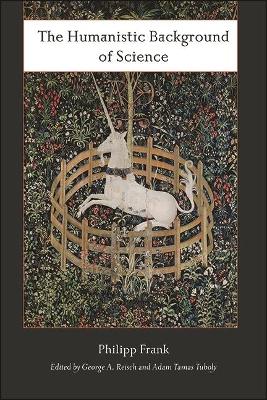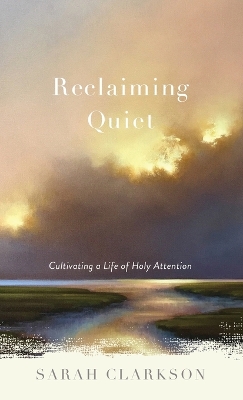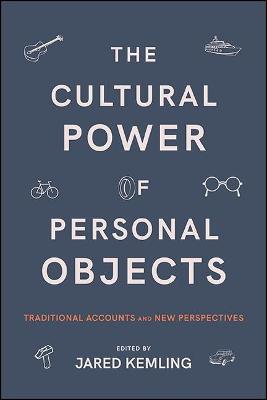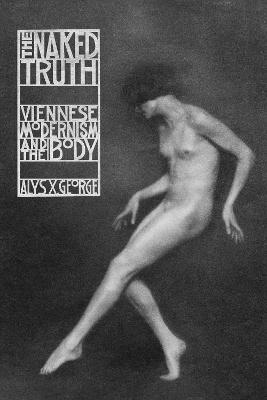Humanistic Background of Science
 portes grátis
portes grátis
Humanistic Background of Science
Tuboly, Adam Tamas; Reisch, George A.; Frank, Philipp
State University of New York Press
07/2022
398
Mole
Inglês
9781438485522
15 a 20 dias
227
Descrição não disponível.
List of Illustrations
Chronology of Philipp Frank's Life
Philipp Frank: A Crusader for Scientific Philosophy
Part I
Chapter 1. Introduction: Science, Facts, and Values
1. Science and Poetry
2. Charges against the Monopoly of Science
3. Twentieth-Century Science and Philosophy
4. The "Real World" Is Not Describable
5. The Humanities Are Trailing behind the Natural Sciences
6. The "Special Sciences" Don't Exhaust "Science"
7. Semantic and Pragmatic Components of Science
8. Philosophical Schools Woo the Support of Science
9. Principles of Science and Human "Values"
Chapter 2. The Longing for a Humanization of Science
1. Dissatisfaction with Nineteenth-Century Science
2. Emerson on the Changing Role of Science
3. Lord Herbert Samuel for Modern Science
4. Dehumanization of Science
5. Soviet Philosophy and Modern Science
6. The Birth of Modern Science Was the Birth of Dissatisfaction
7. Bacon on the Copernican System
8. How Science Has Been "Humanized"
9. Analogies as Humanizing Elements
10. "Humanization," "Metaphysics" and the "Inner Eye"
11. Metaphysics, Common Sense, and the Inner Eye
12. The Nature of Metaphysical Statements
13. The Inner Eye and Intuition
Chapter 3. Metaphysical Interpretations of Science
1. The Founder of Pragmatism on Science and Philosophy
2. Peirce's Conception of Philosophy
3. Metaphysics Nearer to Common Sense than Science
4. The Purpose of Metaphysical Interpretation
5. Metaphysics as Science
6. The Laws of Physics and Their Metaphysical Interpretation
7. How Scientists Have Interpreted Their Own Theories
Chapter 4. The Sociology of Metaphysical Interpretations
1. Can Science Be "Purged" of Philosophy?
2. Science and Chance Philosophies
3. The Attitudes of Scientists and Authorities
4. The Battle of Worldviews
5. Purging Physics and Metaphysics
6. Science and Reality
7. Max Planck and the Real World
8. Meanings and Examples of "Real"
9. Sociological Role of "Reality"
10. "Reality" in Soviet Philosophy
Chapter 5. Philosophy of Science and Political Ideology
1. Sociology of Knowledge
2. The General Sense of Ideology
3. Mannheim, Ideology, and Sociology of Knowledge
4. Forms of Social Influence
5. Facts and Interpretation
6. Sociology of Science
7. Social Class and Social Situation
8. The Solution to the Puzzle
Chapter 6. Sociology of Science and the Search for a Democratic Metaphysics
1. Validation and Theory Building
2. Science as a Compromise between Technology and Political Philosophy
3. The Scientific Conscience
4. Philosophical Interpretations and Democracy
5. The Physical and the Socio-cosmic Universe
Part II
Chapter 7. Scholastic Philosophy and Thomism
1. The Meanings of Rational and Intelligible
2. The Role of Philosophical Schools
3. Science and "Thomism"
4. The Thomistic Theory of Matter
5. The Social Significance of Thomistic Philosophy
6. On Angels and Genuine Laws
7. Thomism and Physical Laws
8. Analogical and Scientific Thinking
Chapter 8. The Physical Universe as a Symbol
1. The Moral Universe
2. Physical Science in the Bible
3. The Physical Universe and Human Behavior
4. Scholastic "Scientism" and Modern "Positivism"
5. Shifting the Problem to Revelation
6. Realism and Nominalism
7. The Situation in the Nineteenth and Twentieth Centuries
Chapter 9. Union, Divorce, and Reunion between Science and Philosophy
1. Science and Philosophy in the British and Soviet Encyclopedias
2. "Truce" through a Naturalization of Science
3. Attempts at a Reunion by a Positive Philosophy
4. The Role of "Sociology" in Positive Philosophy
5. The "Truth" of General Principles in Positive Philosophy
6. The Relative Truth of Theories
7. Positive Philosophy and Marginal Metaphysics
8. Science and Philosophy after the Reunion
9. The Name "Philosophy" as a Challenge
Chapter 10. Science, Democracy, and the New Wave of Positivism
1. Science after the French Revolution
2. Positivism in the Second Half of the Nineteenth Century (Stallo)
3. Positivism in the Second Half of the Nineteenth Century (Mach)
4. The Reception of Mach and Stallo?
5. Conventionalism (Poincare, Le Roy)
6. Abel Rey and the Bankruptcy of Science
7. Duhem's Accommodation of Positivism and Metaphysics
Chapter 11. The Vienna Circle: Moritz Schlick, Rudolf Carnap, and Otto Neurath
1. The Turning Point in Positivism
2. Logical Positivism and the Theory of Correspondence
3. Philosophy as Activity and the Unified Picture
4. Cross-connections among the Sciences
5. Changes in the Science of Meaning
6. The Vienna Circle and the Pragmatics of Metaphysics
7. Cognitive Significance and Scientific Value
Chapter 12. Pragmatism
1. Pragmatism (William James, Charles S. Peirce, and John Dewey)
2. Peirce's Pragmatism and Positivism
3. James's Pragmatism and Metaphysics
4. Dewey and Political Interpretations of Science
5. A New Development: Scientific Empiricism
6. The Meaning and Significance of Bridgman's Operationalism
7. Nagel's Contextualistic Naturalism
Chapter 13. Mechanistic and Dialectical Materialism
1. Mechanistic Materialism
2. La Mettrie's Materialism
3. Purposiveness in Nature
4. Materialism Refuted?
5. Materialism versus Positivism
6. Soviet Attacks against Positivism
7. The Conversion of Mass and "Star-Spangled" Operationalism
Chapter 14. The Laws and Politics of Dialectical Materialism
1. Dialectical versus Mechanistic Materialism
2. Diamat and Philosophy
3. Diamat and Realism
4. The Dialectical Laws
5. Quantitative and Qualitative Changes
6. Social Change and Natural Science
Conclusion: Einstein's Philosophy of Science
1. The Positivistic Basis
2. The Metaphysical Basis
3. The Analogical-Religious Basis
Notes
Bibliography
Index
Chronology of Philipp Frank's Life
Philipp Frank: A Crusader for Scientific Philosophy
Part I
Chapter 1. Introduction: Science, Facts, and Values
1. Science and Poetry
2. Charges against the Monopoly of Science
3. Twentieth-Century Science and Philosophy
4. The "Real World" Is Not Describable
5. The Humanities Are Trailing behind the Natural Sciences
6. The "Special Sciences" Don't Exhaust "Science"
7. Semantic and Pragmatic Components of Science
8. Philosophical Schools Woo the Support of Science
9. Principles of Science and Human "Values"
Chapter 2. The Longing for a Humanization of Science
1. Dissatisfaction with Nineteenth-Century Science
2. Emerson on the Changing Role of Science
3. Lord Herbert Samuel for Modern Science
4. Dehumanization of Science
5. Soviet Philosophy and Modern Science
6. The Birth of Modern Science Was the Birth of Dissatisfaction
7. Bacon on the Copernican System
8. How Science Has Been "Humanized"
9. Analogies as Humanizing Elements
10. "Humanization," "Metaphysics" and the "Inner Eye"
11. Metaphysics, Common Sense, and the Inner Eye
12. The Nature of Metaphysical Statements
13. The Inner Eye and Intuition
Chapter 3. Metaphysical Interpretations of Science
1. The Founder of Pragmatism on Science and Philosophy
2. Peirce's Conception of Philosophy
3. Metaphysics Nearer to Common Sense than Science
4. The Purpose of Metaphysical Interpretation
5. Metaphysics as Science
6. The Laws of Physics and Their Metaphysical Interpretation
7. How Scientists Have Interpreted Their Own Theories
Chapter 4. The Sociology of Metaphysical Interpretations
1. Can Science Be "Purged" of Philosophy?
2. Science and Chance Philosophies
3. The Attitudes of Scientists and Authorities
4. The Battle of Worldviews
5. Purging Physics and Metaphysics
6. Science and Reality
7. Max Planck and the Real World
8. Meanings and Examples of "Real"
9. Sociological Role of "Reality"
10. "Reality" in Soviet Philosophy
Chapter 5. Philosophy of Science and Political Ideology
1. Sociology of Knowledge
2. The General Sense of Ideology
3. Mannheim, Ideology, and Sociology of Knowledge
4. Forms of Social Influence
5. Facts and Interpretation
6. Sociology of Science
7. Social Class and Social Situation
8. The Solution to the Puzzle
Chapter 6. Sociology of Science and the Search for a Democratic Metaphysics
1. Validation and Theory Building
2. Science as a Compromise between Technology and Political Philosophy
3. The Scientific Conscience
4. Philosophical Interpretations and Democracy
5. The Physical and the Socio-cosmic Universe
Part II
Chapter 7. Scholastic Philosophy and Thomism
1. The Meanings of Rational and Intelligible
2. The Role of Philosophical Schools
3. Science and "Thomism"
4. The Thomistic Theory of Matter
5. The Social Significance of Thomistic Philosophy
6. On Angels and Genuine Laws
7. Thomism and Physical Laws
8. Analogical and Scientific Thinking
Chapter 8. The Physical Universe as a Symbol
1. The Moral Universe
2. Physical Science in the Bible
3. The Physical Universe and Human Behavior
4. Scholastic "Scientism" and Modern "Positivism"
5. Shifting the Problem to Revelation
6. Realism and Nominalism
7. The Situation in the Nineteenth and Twentieth Centuries
Chapter 9. Union, Divorce, and Reunion between Science and Philosophy
1. Science and Philosophy in the British and Soviet Encyclopedias
2. "Truce" through a Naturalization of Science
3. Attempts at a Reunion by a Positive Philosophy
4. The Role of "Sociology" in Positive Philosophy
5. The "Truth" of General Principles in Positive Philosophy
6. The Relative Truth of Theories
7. Positive Philosophy and Marginal Metaphysics
8. Science and Philosophy after the Reunion
9. The Name "Philosophy" as a Challenge
Chapter 10. Science, Democracy, and the New Wave of Positivism
1. Science after the French Revolution
2. Positivism in the Second Half of the Nineteenth Century (Stallo)
3. Positivism in the Second Half of the Nineteenth Century (Mach)
4. The Reception of Mach and Stallo?
5. Conventionalism (Poincare, Le Roy)
6. Abel Rey and the Bankruptcy of Science
7. Duhem's Accommodation of Positivism and Metaphysics
Chapter 11. The Vienna Circle: Moritz Schlick, Rudolf Carnap, and Otto Neurath
1. The Turning Point in Positivism
2. Logical Positivism and the Theory of Correspondence
3. Philosophy as Activity and the Unified Picture
4. Cross-connections among the Sciences
5. Changes in the Science of Meaning
6. The Vienna Circle and the Pragmatics of Metaphysics
7. Cognitive Significance and Scientific Value
Chapter 12. Pragmatism
1. Pragmatism (William James, Charles S. Peirce, and John Dewey)
2. Peirce's Pragmatism and Positivism
3. James's Pragmatism and Metaphysics
4. Dewey and Political Interpretations of Science
5. A New Development: Scientific Empiricism
6. The Meaning and Significance of Bridgman's Operationalism
7. Nagel's Contextualistic Naturalism
Chapter 13. Mechanistic and Dialectical Materialism
1. Mechanistic Materialism
2. La Mettrie's Materialism
3. Purposiveness in Nature
4. Materialism Refuted?
5. Materialism versus Positivism
6. Soviet Attacks against Positivism
7. The Conversion of Mass and "Star-Spangled" Operationalism
Chapter 14. The Laws and Politics of Dialectical Materialism
1. Dialectical versus Mechanistic Materialism
2. Diamat and Philosophy
3. Diamat and Realism
4. The Dialectical Laws
5. Quantitative and Qualitative Changes
6. Social Change and Natural Science
Conclusion: Einstein's Philosophy of Science
1. The Positivistic Basis
2. The Metaphysical Basis
3. The Analogical-Religious Basis
Notes
Bibliography
Index
Este título pertence ao(s) assunto(s) indicados(s). Para ver outros títulos clique no assunto desejado.
List of Illustrations
Chronology of Philipp Frank's Life
Philipp Frank: A Crusader for Scientific Philosophy
Part I
Chapter 1. Introduction: Science, Facts, and Values
1. Science and Poetry
2. Charges against the Monopoly of Science
3. Twentieth-Century Science and Philosophy
4. The "Real World" Is Not Describable
5. The Humanities Are Trailing behind the Natural Sciences
6. The "Special Sciences" Don't Exhaust "Science"
7. Semantic and Pragmatic Components of Science
8. Philosophical Schools Woo the Support of Science
9. Principles of Science and Human "Values"
Chapter 2. The Longing for a Humanization of Science
1. Dissatisfaction with Nineteenth-Century Science
2. Emerson on the Changing Role of Science
3. Lord Herbert Samuel for Modern Science
4. Dehumanization of Science
5. Soviet Philosophy and Modern Science
6. The Birth of Modern Science Was the Birth of Dissatisfaction
7. Bacon on the Copernican System
8. How Science Has Been "Humanized"
9. Analogies as Humanizing Elements
10. "Humanization," "Metaphysics" and the "Inner Eye"
11. Metaphysics, Common Sense, and the Inner Eye
12. The Nature of Metaphysical Statements
13. The Inner Eye and Intuition
Chapter 3. Metaphysical Interpretations of Science
1. The Founder of Pragmatism on Science and Philosophy
2. Peirce's Conception of Philosophy
3. Metaphysics Nearer to Common Sense than Science
4. The Purpose of Metaphysical Interpretation
5. Metaphysics as Science
6. The Laws of Physics and Their Metaphysical Interpretation
7. How Scientists Have Interpreted Their Own Theories
Chapter 4. The Sociology of Metaphysical Interpretations
1. Can Science Be "Purged" of Philosophy?
2. Science and Chance Philosophies
3. The Attitudes of Scientists and Authorities
4. The Battle of Worldviews
5. Purging Physics and Metaphysics
6. Science and Reality
7. Max Planck and the Real World
8. Meanings and Examples of "Real"
9. Sociological Role of "Reality"
10. "Reality" in Soviet Philosophy
Chapter 5. Philosophy of Science and Political Ideology
1. Sociology of Knowledge
2. The General Sense of Ideology
3. Mannheim, Ideology, and Sociology of Knowledge
4. Forms of Social Influence
5. Facts and Interpretation
6. Sociology of Science
7. Social Class and Social Situation
8. The Solution to the Puzzle
Chapter 6. Sociology of Science and the Search for a Democratic Metaphysics
1. Validation and Theory Building
2. Science as a Compromise between Technology and Political Philosophy
3. The Scientific Conscience
4. Philosophical Interpretations and Democracy
5. The Physical and the Socio-cosmic Universe
Part II
Chapter 7. Scholastic Philosophy and Thomism
1. The Meanings of Rational and Intelligible
2. The Role of Philosophical Schools
3. Science and "Thomism"
4. The Thomistic Theory of Matter
5. The Social Significance of Thomistic Philosophy
6. On Angels and Genuine Laws
7. Thomism and Physical Laws
8. Analogical and Scientific Thinking
Chapter 8. The Physical Universe as a Symbol
1. The Moral Universe
2. Physical Science in the Bible
3. The Physical Universe and Human Behavior
4. Scholastic "Scientism" and Modern "Positivism"
5. Shifting the Problem to Revelation
6. Realism and Nominalism
7. The Situation in the Nineteenth and Twentieth Centuries
Chapter 9. Union, Divorce, and Reunion between Science and Philosophy
1. Science and Philosophy in the British and Soviet Encyclopedias
2. "Truce" through a Naturalization of Science
3. Attempts at a Reunion by a Positive Philosophy
4. The Role of "Sociology" in Positive Philosophy
5. The "Truth" of General Principles in Positive Philosophy
6. The Relative Truth of Theories
7. Positive Philosophy and Marginal Metaphysics
8. Science and Philosophy after the Reunion
9. The Name "Philosophy" as a Challenge
Chapter 10. Science, Democracy, and the New Wave of Positivism
1. Science after the French Revolution
2. Positivism in the Second Half of the Nineteenth Century (Stallo)
3. Positivism in the Second Half of the Nineteenth Century (Mach)
4. The Reception of Mach and Stallo?
5. Conventionalism (Poincare, Le Roy)
6. Abel Rey and the Bankruptcy of Science
7. Duhem's Accommodation of Positivism and Metaphysics
Chapter 11. The Vienna Circle: Moritz Schlick, Rudolf Carnap, and Otto Neurath
1. The Turning Point in Positivism
2. Logical Positivism and the Theory of Correspondence
3. Philosophy as Activity and the Unified Picture
4. Cross-connections among the Sciences
5. Changes in the Science of Meaning
6. The Vienna Circle and the Pragmatics of Metaphysics
7. Cognitive Significance and Scientific Value
Chapter 12. Pragmatism
1. Pragmatism (William James, Charles S. Peirce, and John Dewey)
2. Peirce's Pragmatism and Positivism
3. James's Pragmatism and Metaphysics
4. Dewey and Political Interpretations of Science
5. A New Development: Scientific Empiricism
6. The Meaning and Significance of Bridgman's Operationalism
7. Nagel's Contextualistic Naturalism
Chapter 13. Mechanistic and Dialectical Materialism
1. Mechanistic Materialism
2. La Mettrie's Materialism
3. Purposiveness in Nature
4. Materialism Refuted?
5. Materialism versus Positivism
6. Soviet Attacks against Positivism
7. The Conversion of Mass and "Star-Spangled" Operationalism
Chapter 14. The Laws and Politics of Dialectical Materialism
1. Dialectical versus Mechanistic Materialism
2. Diamat and Philosophy
3. Diamat and Realism
4. The Dialectical Laws
5. Quantitative and Qualitative Changes
6. Social Change and Natural Science
Conclusion: Einstein's Philosophy of Science
1. The Positivistic Basis
2. The Metaphysical Basis
3. The Analogical-Religious Basis
Notes
Bibliography
Index
Chronology of Philipp Frank's Life
Philipp Frank: A Crusader for Scientific Philosophy
Part I
Chapter 1. Introduction: Science, Facts, and Values
1. Science and Poetry
2. Charges against the Monopoly of Science
3. Twentieth-Century Science and Philosophy
4. The "Real World" Is Not Describable
5. The Humanities Are Trailing behind the Natural Sciences
6. The "Special Sciences" Don't Exhaust "Science"
7. Semantic and Pragmatic Components of Science
8. Philosophical Schools Woo the Support of Science
9. Principles of Science and Human "Values"
Chapter 2. The Longing for a Humanization of Science
1. Dissatisfaction with Nineteenth-Century Science
2. Emerson on the Changing Role of Science
3. Lord Herbert Samuel for Modern Science
4. Dehumanization of Science
5. Soviet Philosophy and Modern Science
6. The Birth of Modern Science Was the Birth of Dissatisfaction
7. Bacon on the Copernican System
8. How Science Has Been "Humanized"
9. Analogies as Humanizing Elements
10. "Humanization," "Metaphysics" and the "Inner Eye"
11. Metaphysics, Common Sense, and the Inner Eye
12. The Nature of Metaphysical Statements
13. The Inner Eye and Intuition
Chapter 3. Metaphysical Interpretations of Science
1. The Founder of Pragmatism on Science and Philosophy
2. Peirce's Conception of Philosophy
3. Metaphysics Nearer to Common Sense than Science
4. The Purpose of Metaphysical Interpretation
5. Metaphysics as Science
6. The Laws of Physics and Their Metaphysical Interpretation
7. How Scientists Have Interpreted Their Own Theories
Chapter 4. The Sociology of Metaphysical Interpretations
1. Can Science Be "Purged" of Philosophy?
2. Science and Chance Philosophies
3. The Attitudes of Scientists and Authorities
4. The Battle of Worldviews
5. Purging Physics and Metaphysics
6. Science and Reality
7. Max Planck and the Real World
8. Meanings and Examples of "Real"
9. Sociological Role of "Reality"
10. "Reality" in Soviet Philosophy
Chapter 5. Philosophy of Science and Political Ideology
1. Sociology of Knowledge
2. The General Sense of Ideology
3. Mannheim, Ideology, and Sociology of Knowledge
4. Forms of Social Influence
5. Facts and Interpretation
6. Sociology of Science
7. Social Class and Social Situation
8. The Solution to the Puzzle
Chapter 6. Sociology of Science and the Search for a Democratic Metaphysics
1. Validation and Theory Building
2. Science as a Compromise between Technology and Political Philosophy
3. The Scientific Conscience
4. Philosophical Interpretations and Democracy
5. The Physical and the Socio-cosmic Universe
Part II
Chapter 7. Scholastic Philosophy and Thomism
1. The Meanings of Rational and Intelligible
2. The Role of Philosophical Schools
3. Science and "Thomism"
4. The Thomistic Theory of Matter
5. The Social Significance of Thomistic Philosophy
6. On Angels and Genuine Laws
7. Thomism and Physical Laws
8. Analogical and Scientific Thinking
Chapter 8. The Physical Universe as a Symbol
1. The Moral Universe
2. Physical Science in the Bible
3. The Physical Universe and Human Behavior
4. Scholastic "Scientism" and Modern "Positivism"
5. Shifting the Problem to Revelation
6. Realism and Nominalism
7. The Situation in the Nineteenth and Twentieth Centuries
Chapter 9. Union, Divorce, and Reunion between Science and Philosophy
1. Science and Philosophy in the British and Soviet Encyclopedias
2. "Truce" through a Naturalization of Science
3. Attempts at a Reunion by a Positive Philosophy
4. The Role of "Sociology" in Positive Philosophy
5. The "Truth" of General Principles in Positive Philosophy
6. The Relative Truth of Theories
7. Positive Philosophy and Marginal Metaphysics
8. Science and Philosophy after the Reunion
9. The Name "Philosophy" as a Challenge
Chapter 10. Science, Democracy, and the New Wave of Positivism
1. Science after the French Revolution
2. Positivism in the Second Half of the Nineteenth Century (Stallo)
3. Positivism in the Second Half of the Nineteenth Century (Mach)
4. The Reception of Mach and Stallo?
5. Conventionalism (Poincare, Le Roy)
6. Abel Rey and the Bankruptcy of Science
7. Duhem's Accommodation of Positivism and Metaphysics
Chapter 11. The Vienna Circle: Moritz Schlick, Rudolf Carnap, and Otto Neurath
1. The Turning Point in Positivism
2. Logical Positivism and the Theory of Correspondence
3. Philosophy as Activity and the Unified Picture
4. Cross-connections among the Sciences
5. Changes in the Science of Meaning
6. The Vienna Circle and the Pragmatics of Metaphysics
7. Cognitive Significance and Scientific Value
Chapter 12. Pragmatism
1. Pragmatism (William James, Charles S. Peirce, and John Dewey)
2. Peirce's Pragmatism and Positivism
3. James's Pragmatism and Metaphysics
4. Dewey and Political Interpretations of Science
5. A New Development: Scientific Empiricism
6. The Meaning and Significance of Bridgman's Operationalism
7. Nagel's Contextualistic Naturalism
Chapter 13. Mechanistic and Dialectical Materialism
1. Mechanistic Materialism
2. La Mettrie's Materialism
3. Purposiveness in Nature
4. Materialism Refuted?
5. Materialism versus Positivism
6. Soviet Attacks against Positivism
7. The Conversion of Mass and "Star-Spangled" Operationalism
Chapter 14. The Laws and Politics of Dialectical Materialism
1. Dialectical versus Mechanistic Materialism
2. Diamat and Philosophy
3. Diamat and Realism
4. The Dialectical Laws
5. Quantitative and Qualitative Changes
6. Social Change and Natural Science
Conclusion: Einstein's Philosophy of Science
1. The Positivistic Basis
2. The Metaphysical Basis
3. The Analogical-Religious Basis
Notes
Bibliography
Index
Este título pertence ao(s) assunto(s) indicados(s). Para ver outros títulos clique no assunto desejado.







